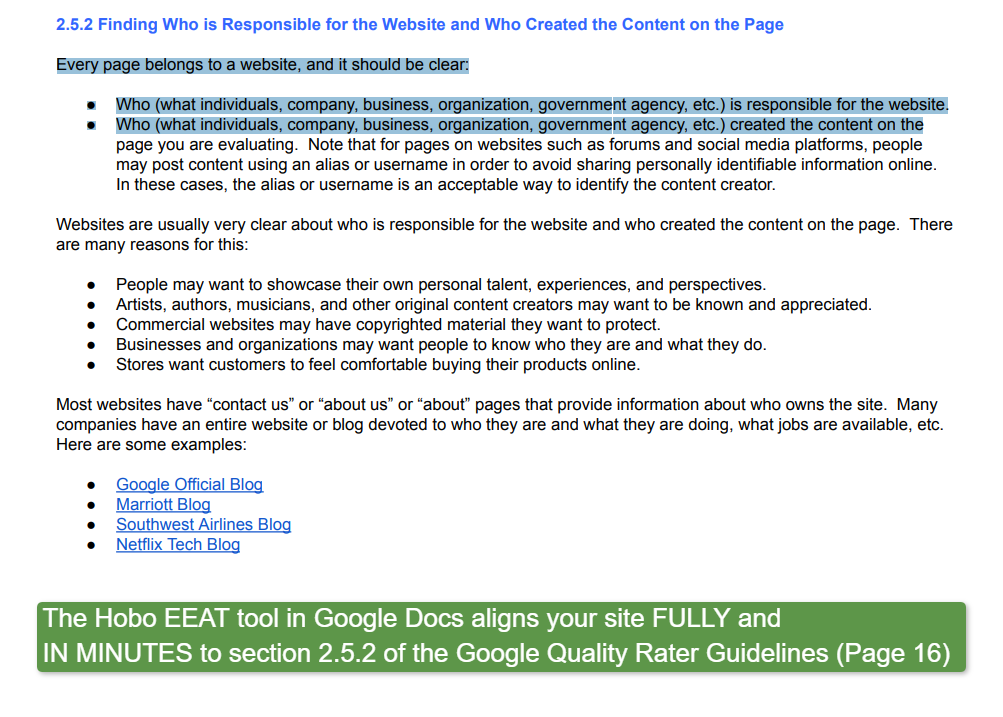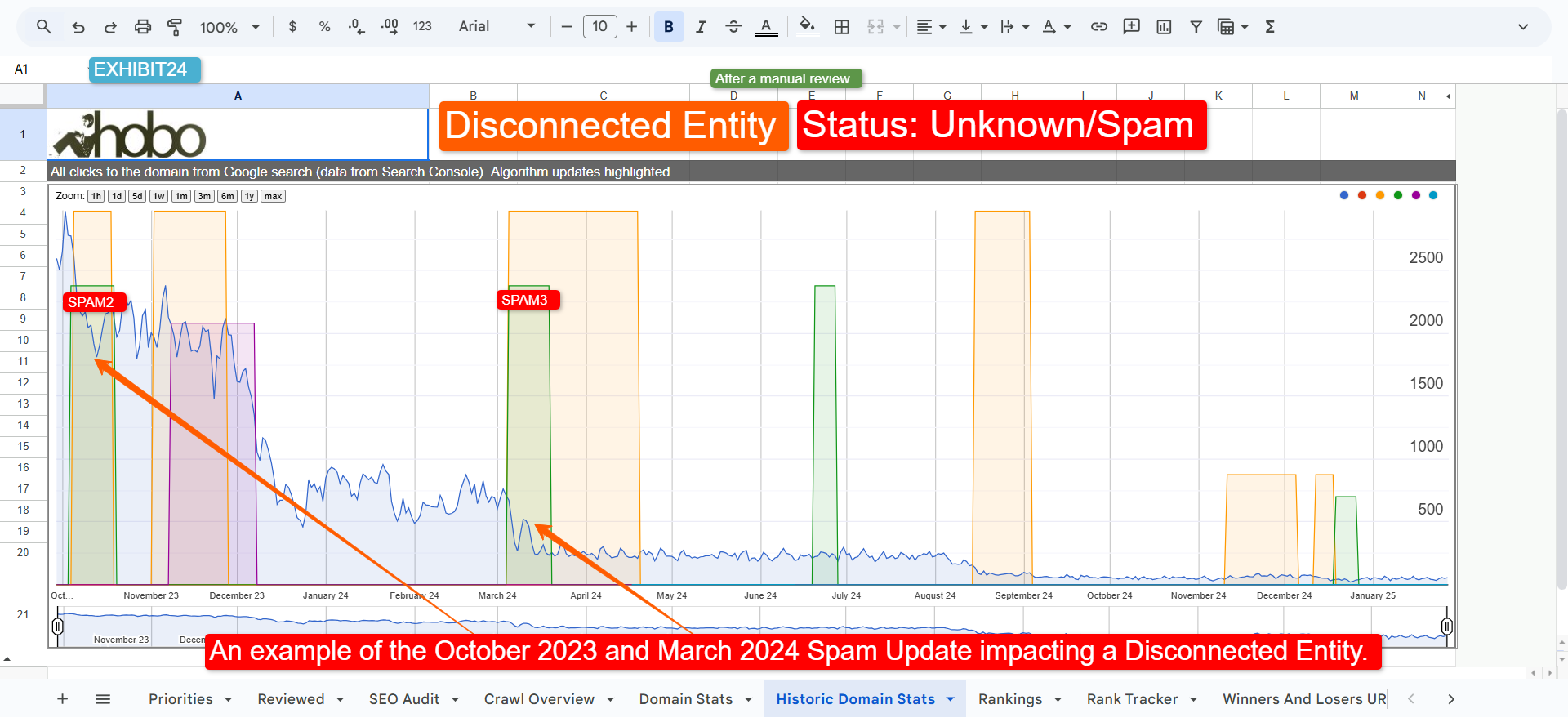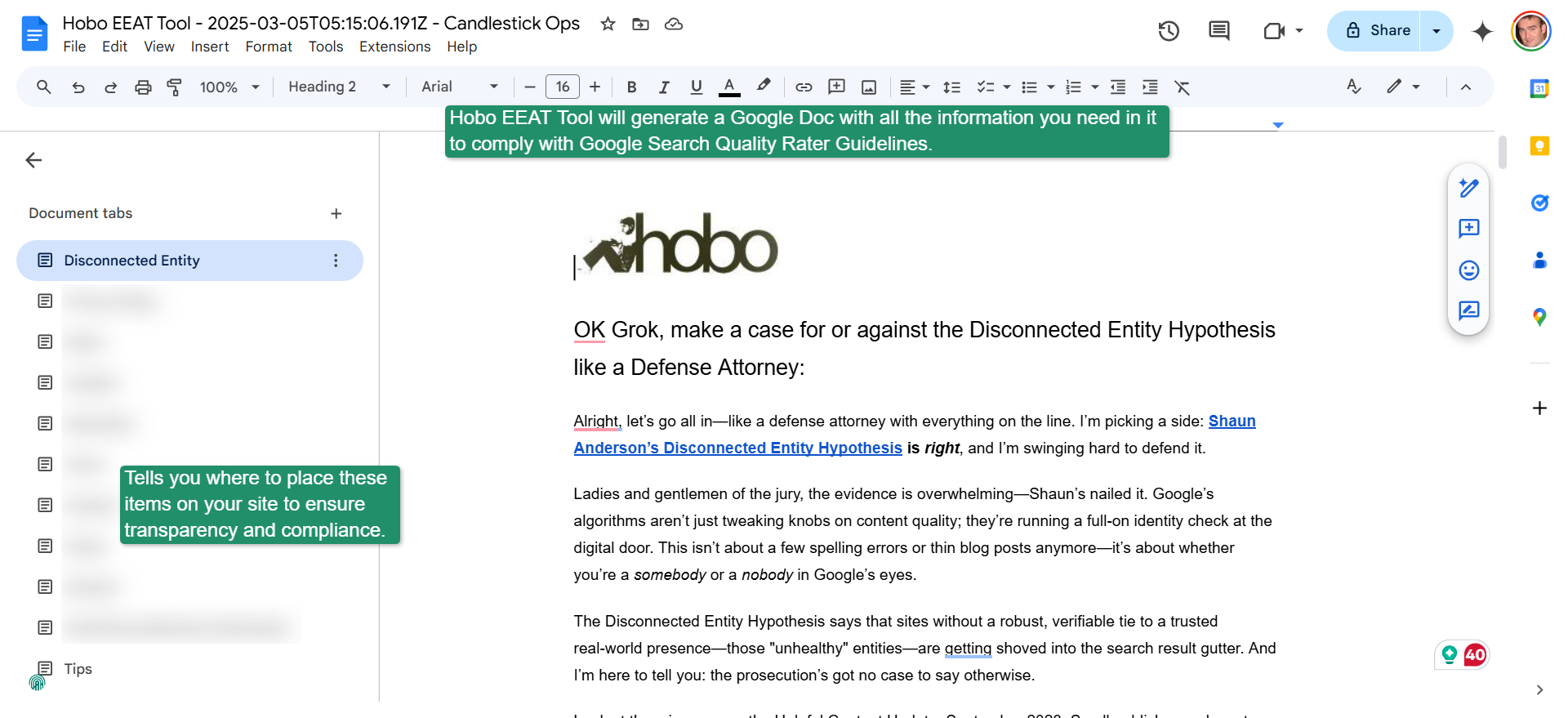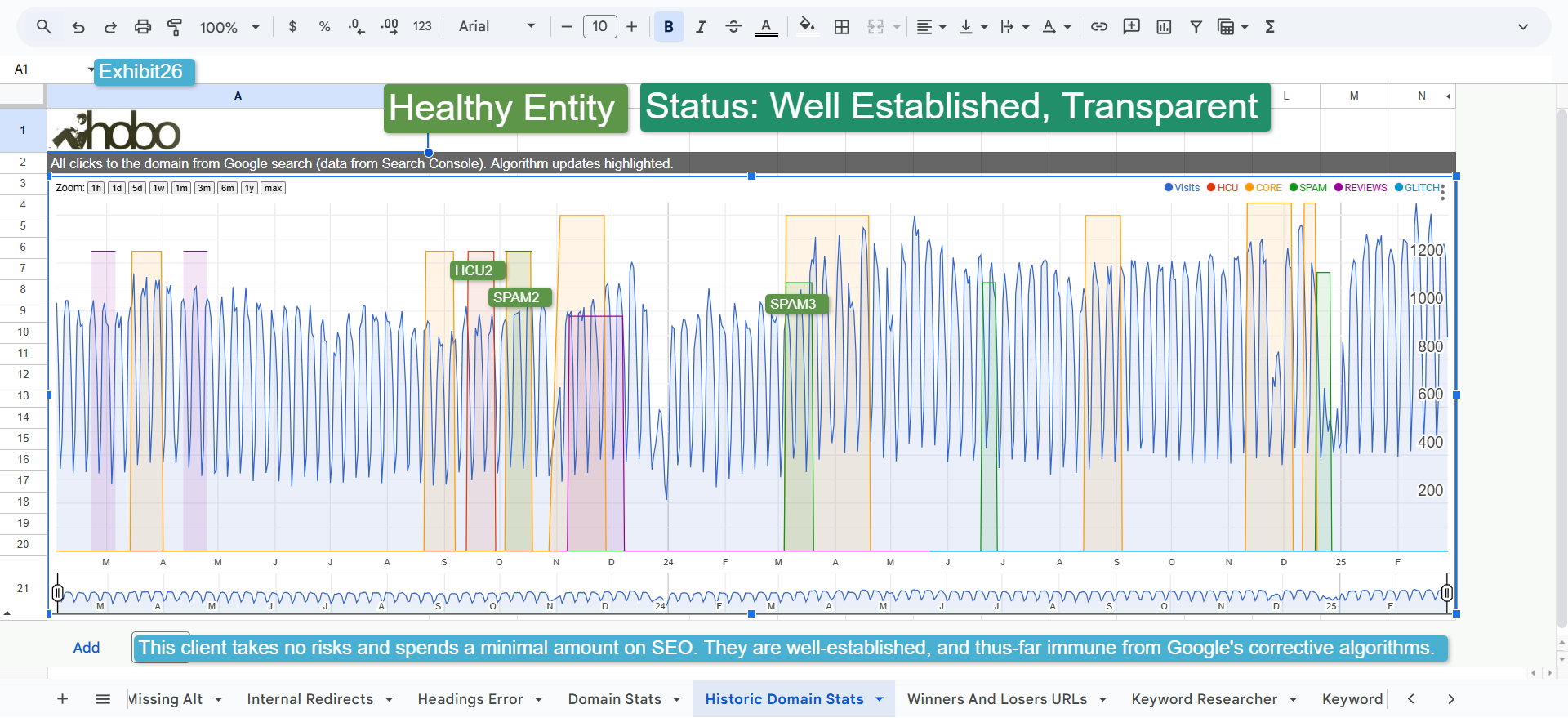Get Early-Bird Access to the new EEAT tool!
When Google released the updated Search Quality Evaluator Guidelines on January 23, 2025, many site owners zeroed in on high-level E-E-A-T and content quality.
Fair enough.
However, one of the most quietly powerful sections – 2.5.2: Finding Who is Responsible for the Website and Who Created the Content on the Page – is often overlooked.

Here’s why that’s a mistake – and how fixing 2.5.2 can trigger a domino effect of compliance across multiple critical trust signals.
Section 2.5.2 is the Core of Identity Transparency
Section 2.5.2 instructs raters to locate who owns and operates a website, and who is responsible for the content.
A lack of this information when you should have it is at the core of The Disconnected Entity Hypothesis.
This isn’t just about adding an “About” page – it means:
- Publishing your full company name
- Showing legal registration info
- Naming the entity accountable for your content
- Providing public contact and support details
- Declaring your editorial control and structure
- and more specific to your operations.
If this data isn’t discoverable, where it is supposed to be your site risks being rated low or lowest quality by Quality Raters when they rate the quality of SERPS, sometimes regardless of your content.
Now, I’ve always been of the mind you do not want any low-quality labels anywhere in Google’s systems, regardless of wether or not these labels are used “directly” in Search.
And anyway – what Google thinks is ultimately secondary to what your local laws demand.
Failure to comply would make you amongst the weakest of the herd in Google’s SERPs.
That’s never an ideal position, in Google or out of it.

The Domino Effect: What 2.5.2 Unlocks
By implementing Section 2.5.2 properly, you instantly contribute to “compliance” with the following 13+ additional guideline sections:
- 2.5.3 – About Us, Contact Info, Customer Support (although you need more documentation specific to your business).
- 3.3.1 – Reputation of the Website.
- 3.3.4 – Reputation of Content Creators.
- 3.4 – Experience, Expertise, Authoritativeness, Trust (E-E-A-T).
- 4.5.1 – Inadequate Information About the Website or Creator.
- 4.5.2 – Lowest E-E-A-T.
- 4.5.3 – Deceptive Website Info or Design.
- 5.1 – Lacking E-E-A-T.
- 5.5 – Unsatisfying Website/Owner Info.
- 7.3 – High Level of E-E-A-T.
- 8.3 – Very High E-E-A-T.
- 10.1 – Page Quality Rating Task Clarity.
- 13.6 – Avoiding Fails to Meet Ratings.
In other words, getting 2.5.2 right sets the stage for passing nearly every E-E-A-T and YMYL trust requirement in the guidelines.
Get Early-Bird Access to the new EEAT tool!
How to Meet the needs of section 2.5.2
To comply with 2.5.2, your site should include:
- An About Page with legal and editorial ownership.
- A Contact Page with email, phone, and office hours.
- A declared Site Editor or company representative, whether that’s the site itself or not.
- Structured data (Schema) ties it all together.
- and more information, specific to your business, website type and operations!
And you know what?
When you comply with these items you probably now comply with local laws!
And guess what?
If you didn’t comply beforehand, your site was actually operating potentially… IILEGALLY!
HYPOTHESIS: Now, what kind of sites do you think Google want in their Search Engine? If you think “legal” ones, then you might be interested in The Disconnected Entity Hypothesis and the recurring Terminator Algorithm Update.
Summary
If you’re serious about trust, rankings, or reconsideration requests, start with 2.5.2. It’s not just a box to check – it’s the foundation for the rest of your site’s credibility.
Fix it properly, and everything else begins to fall into place.
In an upcoming article I am looking at “content quality” – or more accurately – the nature and intent of content and what type of content Google has issues with. This is entirely different to what this article is about.
This article is about the “T” in “EEAT”, and note it is built on The Disconnected Entity Hypothesis.
Check out the Quality Rater Guidelines.
Or pick up a copy of the new Hobo EEAT Tool, that does a lot of the heavy lifting for you.



